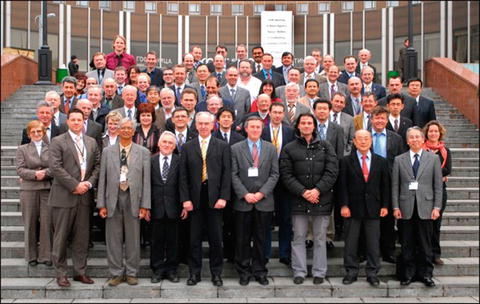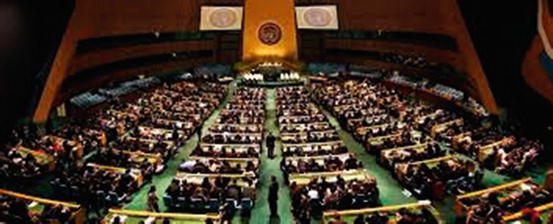Legal Challenges Related to Active Orbital Debris Removal

(1)
Executive Board, International Association for the Advancement of Space Safety (IAASS), Arlington, VA, USA
Introduction
There are currently several sources of international regulatory control and pertinent legal instruments related to orbital debris and its removal. Three of these sources are currently existing international instruments of law, namely the pertinent original principles of international law devised before the Outer Space Treaty was agreed within the United Nations system, the Outer Space Treaty of 1967, and the subsequent Liability Convention of 1972. In addition to these three established sources of international law there are practices of space faring nations and model national laws that define practices for a particular country, but which can also help establish customary practice for other countries as well. Currently there are a number of problems that need to be addressed to facilitate the opportunity for either active orbital debris removal or for activities that would impact the orbits of space objects in attempts to prevent orbital collisions or minimize the likelihood of such collisions. These problems which can be characterized as current challenges to active orbital debris removal include the following:
1.
First of all there is a need for a clear definition of what might be considered orbital debris and the specific means and processes that can be used to distinguish a “space object” from what can be characterized as a “space debris element”. This distinction which does not currently exist in international law must be clear and unambiguous to all entities who might be involved.
2.
A second priority is whether a mechanism might be established to transfer liability from the initial “launching state” to another entity. This involves a number of sub-points such as whether liability can in consistent practice over time be transferred to a “non-state” such as a private entity, an international organization, or a consortia that might include corporations, international organizations and states. There is also the question of whether the launching state could transfer its “ownership” and “launching state status” in terms of liability to another entity and how this could be formally done and whether this could be done multiple times.
3.
There are a number of derivative points of precise process and clear understanding of obligation for those involved with the launch, operation and disposal of space objects/space debris. These include such points: (a) as what could be considered “due diligence” related to the launch of space objects and the subsequent handling of space debris and its removal from orbit; (b) fulfillment of duties and obligations with regard to registration and processing of both “space objects” and the ensuing “space debris elements”; (c) the definition of “due diligence” and “duty of care” with regard to the launch and operation of space objects, the disposal of space objects and/or space debris elements. This obviously involves clarity of definition as to how, when, and why a space object (whether a satellite, a launch vehicle stage, or residual parts) somehow makes the transition to become space debris.
4.
Further there is a need to consider a better definition of “fault” with regard to liabilities, especially when there might be operations such as space debris removal or alteration of an orbit to prevent collision, or placing of space debris into parking orbits.
5.
Finally there is new issue with regard to operations above commercial space but below conventional understanding of outer space. This so-called Protozone or sub-space arena (i.e. above 21 km and below 100 km) is where a great deal of new activity is currently being planned. These activities might include such things as dark-sky stations, ionic engines flying small payloads to low earth orbit, rocket launches from stratospheric launch platforms, hypersonic transoceanic flights, robotic freighters, and sub-orbital flights. There is particular concern about sub-orbital flights (whether for space tourism or hypersonic transportation). This is because these activities are judged to pose the greatest danger of collision that may occur within the Protozone. Currently there is no agreed oversight regulatory body for this increasingly busy area.
The purpose of this chapter is to address all of these regulatory and legal issues and suggest the most urgent areas that need to be addressed to cope with the growing orbital debris problem and to establish an effective legal regime under which active orbital debris removal might be undertaken in coming years.
The Current Sources of International Law in This Area and Supplementary Sources of Regulatory Support Involving Orbital Debris Issues
The international law of space is quite compact—especially when it comes to the subject of space objects and space debris. The formal international space law that exists in this area was drafted over a relatively short period between 1963 and 1972 and as such does not take into account much that has changed about outer space activities over the last four decades. It is these instruments, however, that set forth who has jurisdiction over space objects (and thus space debris) and what liabilities that these objects can incur.
Essentially there are three prime sources. First there was the 1963 Declaration of Legal Principles. This was followed with the 1967 Outer Space Treaty that evolved from the consensus discussions within the UN Committee on the Peaceful Uses of Outer Space (COPUOS). (It is notable that as of 1 January 2014, the Outer Space Treaty had been ratified by 103 States and signed by 25 signatories including all space faring nations and thus it is the most pervasive in its global acceptance and as such constitutes what might be called a firm basis of “customary international law”.) [UN Office of Outer Space Affairs]
Finally there is the so-called Liability Convention of 1972 and it is this last provision that is today the most controversial. Following a decade of negotiations, the so-called Liability Convention was adopted by the UN General Assembly. This Convention, elaborates upon Article VII of the Outer Space Treaty that addressed the liability issue. This Liability Convention was unique in that it imposes on the “launching state” an absolute responsibility to provide reparation for damages even in the absence of wrongful conduct by the launching State and does not take account of the fact that the launch might be for another country or a private company located somewhere else around the world, or that the spacecraft that incurs the damage might have been sold to another party entirely. In short this Liability Convention is considered today to have many logical shortcomings and it is this source of international law that is considered to be flawed and stands in many ways as a barrier to active orbital debris removal. [Nicholas Matte]
In addition to these sources of international law there is also UN General Assembly Resolution 1721 (XVI) adopted in 1961 that called upon all States launching objects into orbit or beyond to furnish information promptly to the Committee on the Peaceful Uses of Outer Space, through the Secretary-General, for the registration of launchings. This has transitioned into the Convention on the Registration of Objects Launched into Outer Space that entered into force in 1976 and currently has 62 Parties and 4 Signatories as of July 2014 (Fig. 6.1).


Fig. 6.1
The UN general assembly—the prime body to create outer space law (Graphic courtesy of the United Nations)
In addition there is the Inter-Agency Space Debris Coordination Committee (IADC) that has developed consensus guidelines to minimize the creation of additional space debris. The IADC has 13 member agencies that include those of the major space faring nations and European Space Agency (ESA) and has four working Groups that address related issues. The IADC guidelines with minor modifications became the basis for the voluntary guidelines agreed within the UN Committee on the Peaceful Uses of Outer Space (COPUOS), and then endorsed by the General Assembly in its resolution 62/217 of 22 December 2007. [Inter-Agency Space Debris Coordination Committee] (Fig. 6.2).


Fig. 6.2
The inter-agency space debris coordination committee (IADC)
There are also other helpful regulatory sources that go beyond these UN instruments. Perhaps most notably a number of space faring nations such as the United States and France have adopted national space laws or exacting administrative processes that are quite specific in terms of addressing such issues as legal liability, due diligence to limit the creation of orbital debris, and to set guidelines such that launched space objects must de-orbit within 25 years after mission completion or be placed in suitable parking orbits. In this regard the French Operation Space Act is perhaps the most explicit and serves as model of other national laws for space faring nations. Because there have been no major new treaties related to outer space developed for many decades, the development of these other more informal types of agreements helps to establish international norms of behavior related to space that have evolved in more recent years.